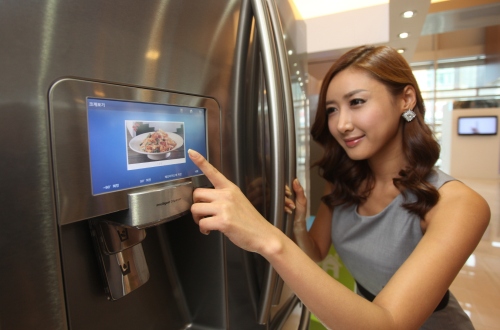Technology predictions for 2014: wearables, branded content and smartphones everywhere
6 Jan, 14 | by BMJ
Predicting the future, especially in the dynamic world of Technology, is a risky business. However, it’s that time of year when the great and good cast caution to the wind and suggest key areas to watch in 2014. Here’s a round-up of the main themes to look out for.
Wearables
This is the big one. A survey for software firm Citrix showed that 91% of Americans are excited about gadgets you can wear – be they glasses, wristbands or clothing. 2014 promises smart-watch launches from Google and Apple, as well as a host of other tech accessories.
A big market for wearables has emerged from The Quantified Self movement:
- Health monitors such as the FitBit and FuelBand collect and analyse physical data often to understand, monitor and maximize physical activity and improve wellness.
- Medical devices that continually monitor particular biometric indicators such as blood sugar levels, pulse to adjust treatment for various illnesses and health deficiencies like diabetes, high cholesterol, cancer, etc.
- Tethered devices that are an extension of a smartphone, such as a Bluetooth biometric sensor acting as a heart monitor.
As a recent report from Credit Suisse asserts, wearable technology is at an inflection point and may have a “significant and pervasive impact on the economy.” The report also points out that wearables are “leveraging advances in voice technology, biometrics, communications, cloud storage, and power consumption” and “smartwatches and other wearable devices could be a $50 billion market by 2017.”
By December 2014, you’ll be able to communicate using a stand-alone smartwatch, browse the internet in your glasses and log dozens of health measurements through wristbands, trainers and clothes. There are even prototypes for smart eyelashes and finger nails!
Mobile dominance
According to Eric Schmidt, Google’s executive chairman, 2014 means smartphones everywhere.
“The biggest change for consumers is going to be that everyone’s going to have a smartphone,” Schmidt says. “And the fact that so many people are connected to what is essentially a supercomputer means a whole new generation of applications around entertainment, education, social life, those kinds of things. The trend has been that mobile is winning; it’s now won. There are more tablets and phones being sold than personal computers – people are moving to this new architecture very fast.”
Mobile usage has grown exponentially around the world, and it continues to accelerate. By the end of 2013, more than 1bn smartphone units will have been shipped worldwide.
Smarter marketing
Building on the ubiquity of smartphones, marketing messages will become far more effective as a result of new mobile, sensor, location and data technologies. Previously, these were only relevant if transactions were made online, but now, technology is improving the ability to market to consumers as they shop or stroll around the real world.
On a separate note, branded content is becoming more important in connecting advertisers with audiences. The trend really took off in 2013 with brand-supported content (e.g. Forbes and Mashable). Simply, it’s a way for media companies to produce worthwhile content with advertiser backing. Advertisers get to support topics with some connection to their brand ideals and target audiences. This success will embolden other product and media owners that have until now avoided blatant brand integration.
Smarter homes
Finally, it seems that the pithy catchphrase, the “Internet of Things“, is becoming a reality.
Nest, the smart home thermostat, is now selling smoke detectors, which not only use the same infrastructure to communicate with homeowners, but which connect with other in-home Nest devices, as well. Home security camera manufacturers like DropCam applied this concept years ago. But while not everyone wants webcam-based home security, every home needs a thermostat.
Similarly, Lockitron lets you lock doors via smartphone. The product has helped encourage other companies, such as Schlage, to introduce their own Internet-ready home security devices. In 2014, many believe that other companies will follow Nest and Lockitron’s lead and help propel the smart home conversion trend in 2014.

